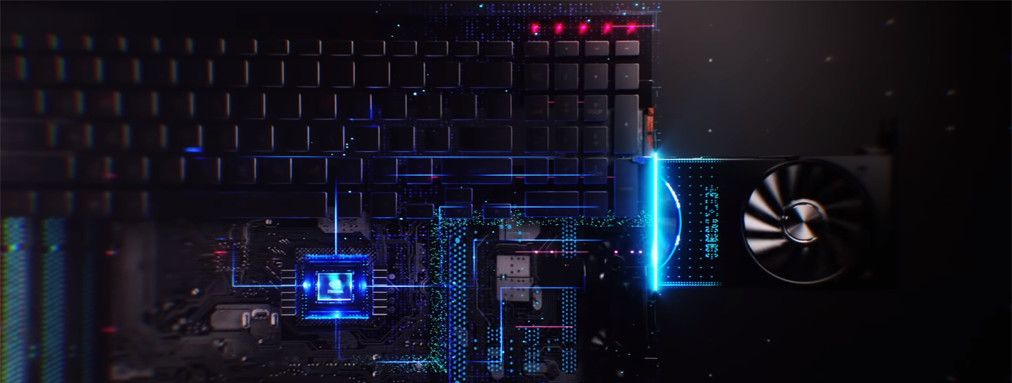News – GeForce RTX 20 Series Laptop GPUs Announced, Although Ray-Traced Performance Has Us Worried


Attention all those with unfathomably deep pockets – Nvidia has unveiled the GeForce RTX 20 Series mobility GPUs set to power the next generation of high-end gaming laptops. Nvidia has gone in heavy this time around, announcing more than 40 gaming notebooks with GeForce Mobility graphics cards right out of the gate and over 17 Max-Q designs with the new 7nm Turing GPU.
While specs are going to vary from design to design, there are three core GeForce RTX 20 Series Mobility graphics cards inbound. These comprise the GeForce RTX 2060, GeForce RTX 2070, and GeForce RTX 2080. They will also be available in ultra-thin Max-Q designs for slimline notebooks.
All three GeForce Mobility RTX 20 graphics cards will come with support for DXR-powered real-time ray-tracing, although their ray-tracing capabilities will be significantly weaker as compared to their desktop counterparts. The GeForce RTX 2080 Mobility sits at the top of the pack with 5-7 GigaRays/s, the GeForce RTX 2070 can perform 4-5 GigaRays/s, while the GeForce RTX 2060 Mobility can achieve just 3.5 GigaRays/s. When Nvidia revealed its RTX family, Jensen himself claimed 5 GigaRays/s is the minimum required for satisfactory performance. As a result, we don’t have high hopes for the ray-tracing performance of either the RTX 2060 or the RTX 2070.
Specs-wise these graphics cards are certainly comparable outside of ray-tracing, sporting the same number of CUDA cores and equivalent VRAM as their desktop variants. However, the mobile demands mean they’re each clocked a chunk slower. The GeForce RTX 2060 mobility has a base clock of 960MHz and a boost clock for 1200 MHz, for example, while the desktop version has a base clock of 1365 MHz and a boost clock of 1680 MHz.
GeForce RTX 2080 Mobility GeForce RTX 2080 GeForce RTX 2070 Mobility GeForce RTX 2070 GeForce RTX 2060 Mobility GeForce RTX 2060 GPU Architecture Turing Turing Turing Turing Turing Turing GPU TU104 TU104-400A-A1 TU106 TU106 TU106 TU106 Process Node 12nm NFF 12nm NFF 12nm NFF 12nm NFF 12nm NFF 12nm NFF CUDA Cores 2944 2944 2304 2304 1920 1920 Tensor Cores 368 368 288 288 240 240 RT Cores 46 46 36 36 30 30 Ray-Traced Performance
5-7 GigaRays/s
8 GigaRays/s
4-5 GigaRays/s
6 GigaRays/s 3.5 GigaRays/s 5 GigaRays/s Core Clock
1380 MHz
735 MHz (Max-Q)
1515 MHz
1215 MHz
885 MHz (Max-Q)
1410 MHz 960 MHz 1365 MHz Boost Clock
1590 MHz
1095 MHz (Max-Q)
1800 MHz
1440 MHz
1185 MHz (Max-Q)
1620 MHz 1200 MHz 1680 MHz Memory 8GB GDDR6 8GB GDDR6 8GB GDDR6 8GB GDDR6 6GB GDDR6 6GB GDDR6 Memory Speed 14 GHz 14 GHz 14 GHz 14 GHz 14 GHz 14 GHz Memory Interface 256-bit 256-bit 256-bit 256-bit 192-bit 192-bit Memory Bandwidth 448GB/s 448GB/s 448GB/s 448GB/s 336 GB/s 336GB/s TDP 80-150W 215W 80-115W 175W 80-90W 150W Power Input N/A 1x 6-pin & 1x 8-pin N/A 1x 8-pin N/A 1x 8-pin Founders Price N/A $799 N/A $599 N/A $349 Normal Price N/A $699 N/A $499 N/A $349
“Laptops are the fastest growing gaming platform — and just getting started,” said Jensen Huang, CEO of NVIDIA.
“The world’s top OEMs are using Turing to bring next-generation console performance to thin, sleek laptops that gamers can take anywhere. Hundreds of millions of people worldwide — an entire generation — are growing up gaming. I can’t wait for them to experience this new wave of laptops.”
Nvidia’s range of GeForce RTX 20 Series mobility graphics cards will be launching on January 29th through various hardware partners and laptop OEMs. Expect prices to be on the high end even for the weaker models, but even a mobile GeForce RTX 2060 should offer performance far in excess of a PlayStation 4 Pro. Not too bad for gaming on the go, not too bad at all.





Leave a Reply